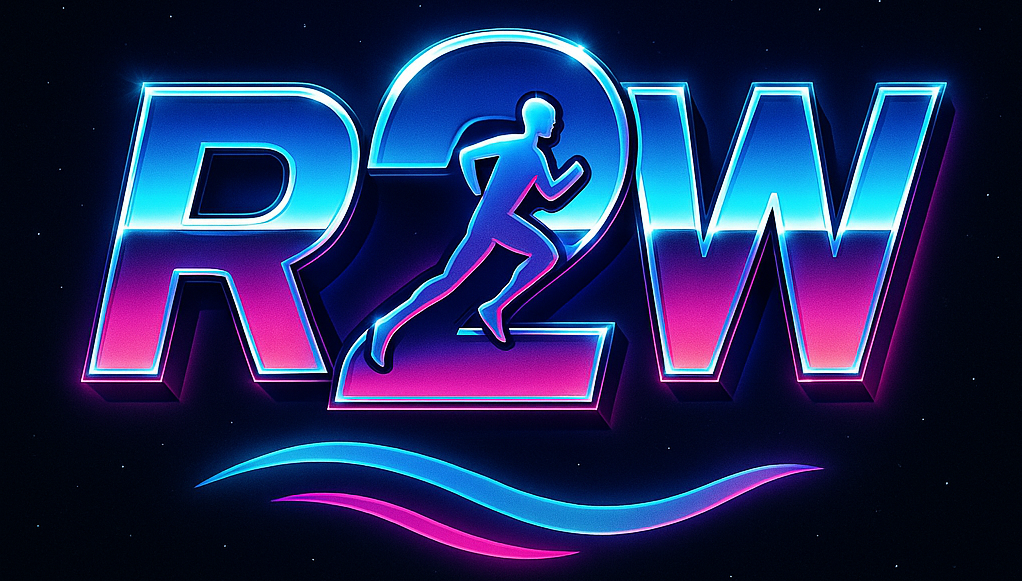
Running on gut instinct might sound like a catchy phrase, but it hides a deeper truth about how our inner ecosystem influences our fitness adventure. I’ve become fascinated over the years by how the microbes in our digestive system can shape our energy, endurance, and recovery during workouts. This article explores this interplay between the microbiome and physical performance, and offers practical tips to tap into its potential.
1. Introduction to the Microbiome and Fitness
When I first learned about the microbiome, I was surprised to discover that a tiny collection of bacteria, viruses, fungi, and other microbes plays such a huge role in our overall health. The idea is simple: what happens inside your gut does not stay in your gut. The microbes living in your digestive tract can affect how you digest food, how much energy you have, and even your mental state. This connection is particularly interesting for athletes and fitness enthusiasts who rely on consistent energy levels and fast recovery times.
This article will examine the ways in which your gut microbiome influences your physical performance and provide actionable strategies to support a healthier digestive environment.
2. Understanding Your Microbiome
The term microbiome refers to the collection of all microbes, including bacteria, fungi, viruses, and their genes, that naturally reside in and on our bodies. As noted by the National Institute of Environmental Health Sciences, “What is in the microbiome? The microbiome is the collection of all microbes, such as bacteria, fungi, viruses, and their genes, that naturally live on our bodies and inside us. Although microbes are so small that they require a microscope to see them, they contribute in big ways to human health and wellness.”
I find it fascinating that this microscopic community not only maintains our health but also plays a part in how we perform when we exercise. The diversity and balance of your gut microbes can influence everything from energy management to inflammation control.
3. The Digestive System and Athletic Performance
A healthy digestive system is more important for athletes than many people realize. One common question is, “What are two reasons why a healthy digestive system is important for competing athletes?” There are two main reasons for this. First, the gastrointestinal (GI) tract plays a really important role in delivering carbohydrates and fluids to the blood during prolonged exercise. This means that a well-functioning gut can help ensure that you have the energy and hydration you need when training for long-distance runs or competitive sports. Second, the GI tract is fundamental for nutrient absorption, ensuring that the vitamins and minerals required for muscle repair and energy production are efficiently taken into the body.
This mechanism is vital during endurance activities where every bit of energy and hydration counts. A balanced gut contributes to optimal performance, making it a key area of focus for athletes looking to maximize their potential.
4. How a Balanced Gut Boosts Endurance and Recovery
A well-balanced microbiome can be a secret weapon in the world of athletics. When your gut health is optimized, your body can process nutrients more efficiently, which in turn can lead to improved energy production during exercise. Here are some ways a balanced gut supports athletic performance:
- Smoother digestion and better nutrient absorption.
- Step up delivery of vital carbohydrates and fluids during endurance workouts.
- Improved regulation of inflammation, which aids quicker recovery after intense training.
By maintaining a balanced gut, you can boost your overall stamina and reduce recovery times. This allows you to push harder during your workouts and achieve your fitness goals more reliably.
5. The Connection Between Gut Health and Immune Function
Your digestive system is not just about digestion—it plays a major role in maintaining your immune health. Many microbes in your gut help train your immune system, keeping it alert and balanced. When you’re training hard, your immune system is under extra stress, which can leave you vulnerable to colds or infections.
A robust microbiome helps ease up these risks by reducing systemic inflammation and supporting healthy immune responses. This means that not only do you perform better when you’re at your physical peak, but you also recover more quickly from demanding training sessions or minor illnesses.
6. Nourishing Your Microbiome Through Diet and Lifestyle
What you eat plays an enormous role in shaping your gut microbiome. I have seen firsthand how dietary choices can impact energy levels and gut comfort. A diet rich in fiber, fruits, vegetables, and fermented foods can introduce beneficial bacteria into your system. Consider adding foods such as yogurt, kefir, kimchi, and sauerkraut, which harbor live cultures that can support gut health.
In addition to probiotics, prebiotic fibers (found in foods like onions, garlic, and asparagus) encourage the growth of healthy bacteria. Here are a few practical tips:
- Eat a variety of plant-based foods every day to support microbial diversity.
- Limit highly processed foods that may upset the balance in your gut.
- Stay hydrated to help your GI tract function properly.
The choices you make in the kitchen can have a direct impact on your performance in the gym or on the track.
7. Listening to Your Body: Running on Gut Instinct
Over time, I learned to listen more closely to my body during workouts. Sometimes, I would notice that my stomach felt a bit off before a run or a race. Instead of ignoring these signals, I started paying attention to the need for a balanced gut that could sustain my energy levels.
This gut instinct goes beyond feelings of hunger. It serves as an indicator of whether your internal ecosystem is supporting your physical activity. When I adjusted my diet and focused on improving my gut health, I noticed a marked improvement in both my endurance and comfort during exercise. In essence, learning to trust your gut can lead to more refined training decisions and, ultimately, step up athletic performance.
8. Strategies for Optimizing Your Microbiome for Endurance and Recovery
Optimizing your gut health requires both patience and practical steps. Some athletes use daily routines and strategic eating plans to maintain an optimal microbial balance. Here are some strategies that I have adopted and seen work for others:
- Incorporate probiotic supplements if your diet lacks fermented foods.
- Add prebiotic fibers to your meals to fuel beneficial bacteria.
- Plan your carbohydrate intake around workouts to ensure a steady energy supply.
- Manage stress through mindfulness or breathing exercises, as stress can negatively impact your gut flora.
- Schedule regular recovery periods to allow your body to rebuild and support microbial health.
Implementing these approaches can lead to noticeable improvements in both endurance and recovery times, making your training regimen more effective overall.
9. Incorporating Gut Health Practices into Your Workout Routine
The connection between gut health and performance is so intertwined that integrating gut-friendly practices into your daily training routine can be really beneficial. This might mean adjusting the timing of your meals, experimenting with different types of pre-workout snacks, or even monitoring how your body reacts to certain foods during exercise.
For example, some athletes prefer light, easy-to-digest meals when training in the morning, while others opt for a slightly more substantial snack if they know a workout is coming up later in the day. Being mindful of these details can help you avoid discomfort and maintain peak performance.
Tracking how your body reacts to various foods and meals can also help you optimize your nutrition plan over time. Data such as energy levels and recovery speed can be strong indicators of whether your gut is working efficiently.
10. Monitoring Your Gut Health and Fitness Metrics
Keeping an eye on both your gut health and overall fitness metrics is a balanced approach to self-improvement. This may mean scheduling routine check-ups that involve gut health assessments or simply noting how your body feels during and after training sessions.
Some practical methods include:
- Journaling your diet and exercise routines to spot correlations between food intake and performance.
- Using apps to track hydration, nutrition, and even sleep patterns, which indirectly affect gut health.
- Staying informed on the latest research related to the microbiome and exercise so you can refine your approach over time.
By keeping a detailed account of your progress, you can better understand what your body needs and make adjustments that support both your gut and overall athletic performance.
11. Additional Insights: Advanced Strategies for Maximizing Gut Performance
In addition to the strategies discussed earlier, it is really important to pay attention to how stress affects your digestive system. Studies have shown that when your body goes through a mix of physical exertion and mental tension, your gut microbes can be thrown off balance. This adds another layer to the complex relationship between gut health and exercise performance.
Incorporating stress management techniques such as meditation, gentle stretching, or even listening to calming music can help keep your internal ecosystem in check. Another advanced strategy is to customize your diet based on your personal needs. Experimenting with different types of fiber or fermented foods might reveal how your body uniquely responds to dietary changes. Taking the time to monitor and adjust your nutrition plan can give a boost to your recovery times and energy levels. With patience and persistence, you can tap into your body’s natural capacity to maintain a robust and balanced microbiome.
Final Thoughts
Running on gut instinct doesn’t mean relying solely on feelings during workouts. It means understanding and nurturing the microscopic ecosystem that plays such a vital role in your fitness adventure. A balanced gut helps improve nutrient absorption, endurance, and recovery times. By focusing on dietary choices, mindful eating, and smart training strategies, you can tap into the power of your microbiome to step up athletic performance.
The connection between the gut and fitness is an ongoing adventure of discovery and optimization. I encourage you to check out the relationship between your microbiome and your training routine. Experiment with dietary changes, listen to your body, and consider using tracking techniques to see what works best for you. With small, steady adjustments, you might find that your gut instinct carries you further than you ever expected.

